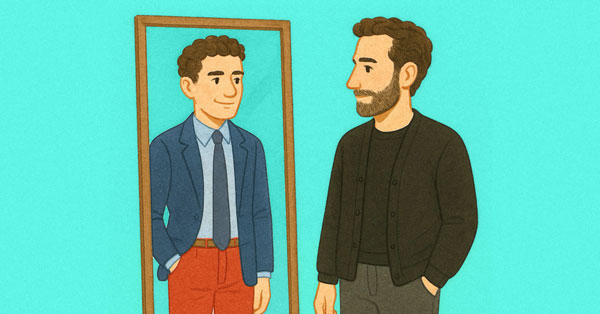Evolution of Personal Style: Insights for the Middle-Aged Man
As life progresses, our personal styles often evolve significantly. What may have been fashionable and fitting in our twenties can swiftly change in light of responsibilities, life events, and personal growth. This article explores the transition of style, particularly for men on the verge of middle age, highlighting key lessons learned along the way.
1. Dressed for Yourself, Not for Others
In the formative years of a career, attention to style can often stem from a desire to impress. Early in my teaching career, my attire was meticulously coordinated, right down to matching socks and ties. While this playful detail garnered student interest, it also became a source of pressure to maintain a certain aesthetic. With time, I’ve shifted my focus to dressing for comfort and self-expression rather than meeting others’ expectations. My current wardrobe prioritizes what makes me feel good, often irrespective of whether anyone else notices.
2. The Role of Personal Hygiene in Style
Effective personal style encompasses more than just fashion choices; personal hygiene plays a critical role. Conversations with students have revealed that even minor improvements—like maintaining clean hair and nails—can significantly influence perceptions. The importance of a polished appearance extends beyond social interactions; it can affect professional opportunities and relationships within formal settings.
3. Dressing for Your Current Body
Physical changes are a natural part of life, and adapting one’s wardrobe to reflect those changes is essential. Acknowledging shifts in body size can prevent discomfort and ensure a more flattering fit. Choosing clothes that fit well not only enhances comfort, particularly when engaged in active roles, like teaching, but also promotes self-confidence. Fighting against the reality of one’s body often results in unflattering, uncomfortable clothing choices that do more harm than good.
4. Investing in Timeless, Quality Pieces
As I’ve aged, I’ve embraced a principle often referenced as “cry once”—the idea that it’s better to invest in high-quality items that endure over time rather than continually replace cheaper options. A pair of loafers or a leather bag that lasts years can ultimately save money and reduce waste. In choosing clothing, I consider value over cost; quality doesn’t always equate to high price. There are affordable brands, like those available at popular retail stores, that provide excellent value without sacrificing quality.
5. Dressing Appropriately for Each Occasion
While personal style may lean away from dressing to impress, the importance of appropriateness remains crucial. Understanding when to dress up or down for an occasion reflects respect and seriousness regarding the event. For instance, formal events still warrant formal attire—such as a suit or at least a jacket and tie. Underdressing can inadvertently signal a lack of respect for the occasion or the people involved.
6. Adding a Touch of Color
Injecting color into an outfit has become a preferred strategy for making a statement without overwhelming the overall look. Subtle additions, like a colorful pocket square or a unique tie, can create striking visual interest while maintaining a sophisticated appearance. Small doses of bright hues infuse personality into one’s wardrobe, reflecting the wearer’s individuality and style preferences.
Conclusion
The journey of style is a reflection of personal growth and experiences. As one transitions into middle age, understanding and adapting personal style to suit the body, lifestyle, and life events becomes critical. Ultimately, a thoughtful approach to dressing not only enhances self-esteem but also leaves a lasting impression on others.
